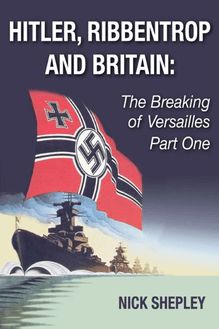Palmer Raids and the Red Scare , livre ebook
17
pages
English
Ebooks
2015
Vous pourrez modifier la taille du texte de cet ouvrage
Obtenez un accès à la bibliothèque pour le consulter en ligne En savoir plus
Découvre YouScribe en t'inscrivant gratuitement
Découvre YouScribe en t'inscrivant gratuitement
17
pages
English
Ebooks
2015
Vous pourrez modifier la taille du texte de cet ouvrage
Obtenez un accès à la bibliothèque pour le consulter en ligne En savoir plus
Publié par
Date de parution
07 décembre 2015
Nombre de lectures
0
EAN13
9781849899444
Langue
English
Publié par
Date de parution
07 décembre 2015
Nombre de lectures
0
EAN13
9781849899444
Langue
English
Title Page
THE PALMER RAIDS AND THE RED SCARE 1918 - 1920
WILSON, PALMER AND THE BREAKING OF AMERICAN SOCIALISM
By
Nick Shepley
Publisher Information
The Palmer Raids and the Red Scare 1918 - 1920
Published in 2011 by
Andrews UK Limited
www.andrewsuk.com
This book is sold subject to the condition that it shall not, by way of trade or otherwise, be lent, resold, hired out or otherwise circulated without the publisher’s prior written consent in any form of binding or cover other than that in which it is published, and without a similar condition being imposed on the subsequent purchaser.
The characters and situations in this book are entirely imaginary and bear no relation to any real person or actual happening.
Copyright Nick Shepley
The right of Nick Shepley to be identified as author of this book has been asserted in accordance with section 77 and 78 of the Copyrights Designs and Patents Act 1988.
The Red Scare 1919-1920
To an isolationist USA the changes in the world that seemed to have erupted forth from the First World War must have been frightening and bewildering. This is how many people interpret the US Red Scare immediately after the war, but there is a problem with this picture. Anti-Communism, anti-union activity and nothing short of an all-out war against the organised left had been a constant feature of life in America in the previous half century. The attack on the left after the war was nothing new, except for it’s intensity and seeming urgency, though the impetus for anti-leftist policies seemed to come not as before from private enterprise but from the Federal government itself. The experience of the Russian Revolution and the wave of other less successful communist insurrections across Europe presented America was a radically changed political environment; the USA after world war one had become involved in the attempt to crush the Bolshevik revolution in its infancy and it was often communists and socialists from Russia, Greece, Italy, Poland and other non-Anglo Saxon countries who had emigrated to the USA who were considered most suspect, which suggests to us the possibility that the red scare was more a panic over immigration than it was related to real anxieties about Communism. It could be said, however, that the Cold War actually began in 1918, the hate, fear and suspicion of Communism, and foreign ventures to crush it wherever it manifested itself were both as intense in 1918 as they were in 1950.
Leon Trotsky Comes To America
Leon Trotsky, along with the rest of the Bolshevik Party was completely taken by surprise by the February Revolution in 1917. An indication of how surprised he was was the fact that he was stuck in New York when it broke out. Vladimir Lenin had given a rather mournful speech in Switzerland a fee weeks beforehand to younger revolutionaries, stating that he and his generation would most likely not see the revolution, but it was essential for the next generation to keep up the fight. When the revolution occurred Trotsky and others were in a mad scramble to get home. Trotsky and his long suffering second family had been deported from Paris where he had been living throughout the war as an undesirable, and then set up home in Spain. When the Spanish too got rid of him America was the next port of call. It is an indication of how liberal and perhaps how lax the entry requirements for the USA were, that Trotsky got in at all. A member of a Marxist revolutionary organisation who had been thrown out of two countries already; why did America agree to take him?
Perhaps it is something to do with the on-going struggle for America’s soul throughout 1917. The Creel Commission, Wilson’s war propaganda think tank was busy trying to whip America into a war frenzy, and gradually meeting with greater and greater success. The commission, however, was unable to achieve full success until the Kaiser’s resumption of unrestricted submarine warfare. Once that had resumed, Wilson had all the arguments he needed to engage the USA in the war, with a resulting crackdown on anti-war sentiment. There was enough scepticism towards the war, and outright hostility from German and Irish Americans to make New York a relatively safe destination for someone like Trotsky, who’s reputation in European radical circles was well established, and who would have been equally well known in American émigré and left wing discourse. In New York itself a lively and sophisticated left wing radical culture existed. Much of it had been imported to America by Russian and Polish Jews who had fled the cruelties of the Czarist system from the 1890s onwards, the Jews of the Bund Party in Russia had been one of the Empire’s first mass membership revolutionary parties.











